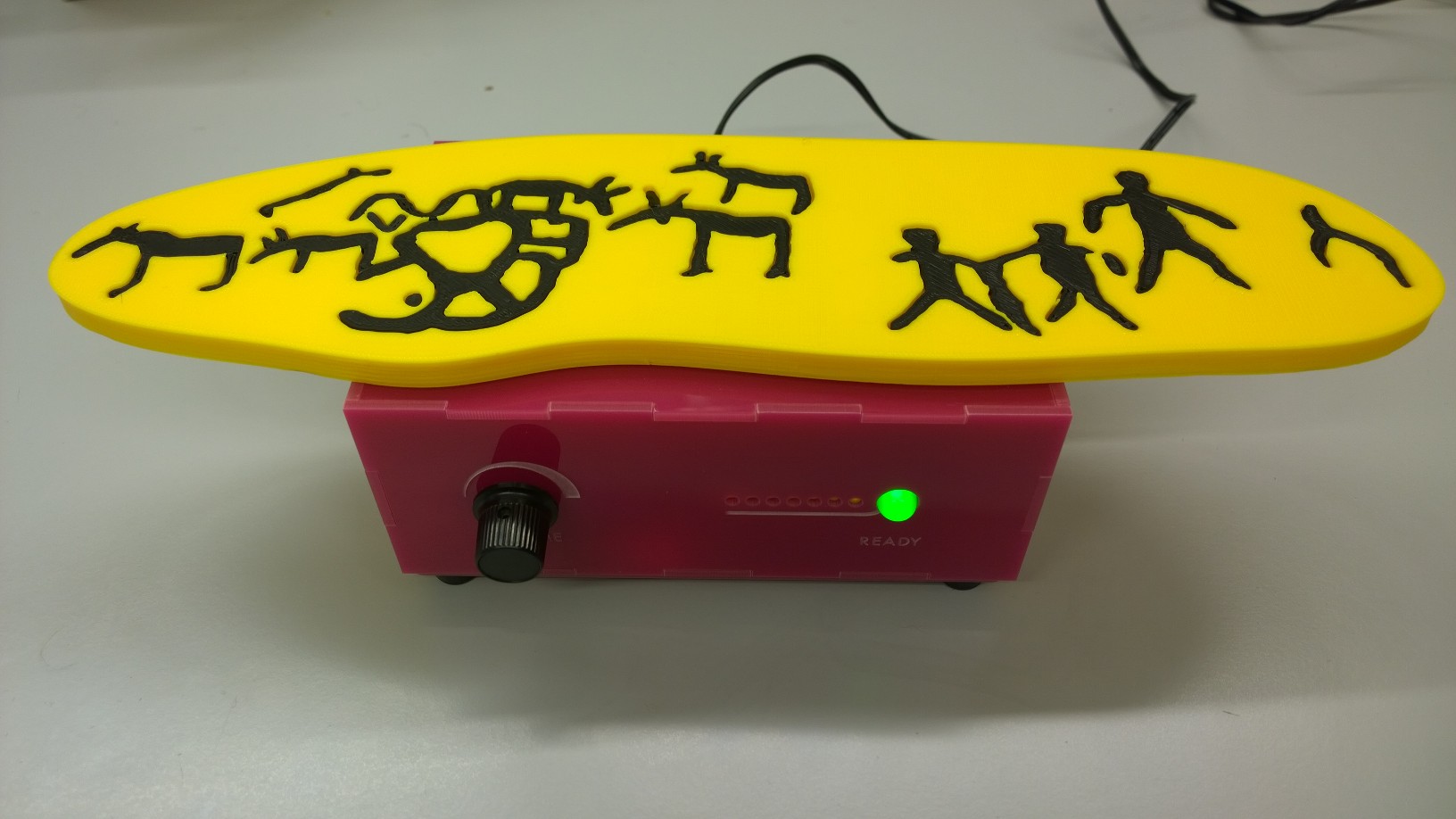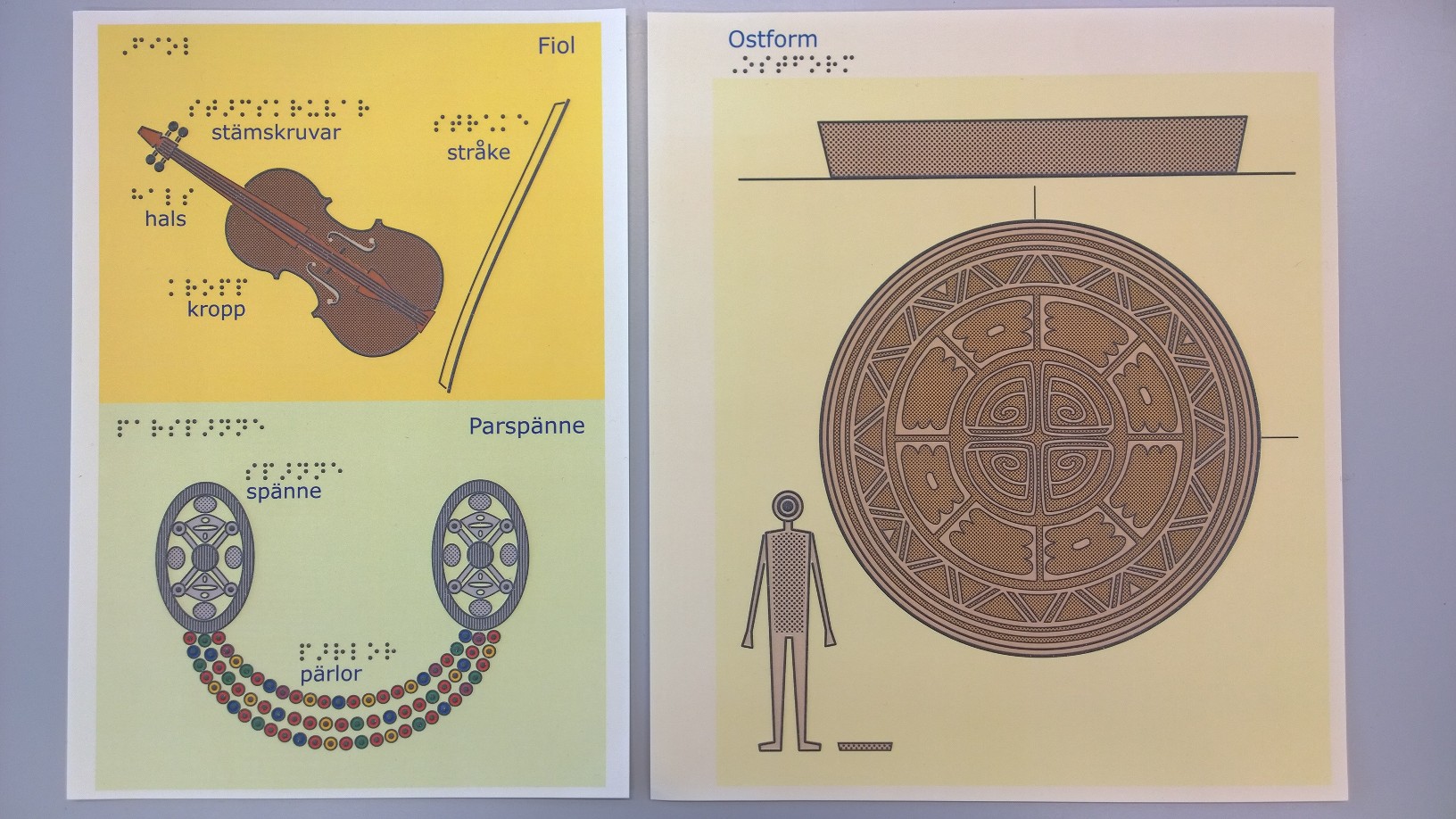4. Supplementary information for tactile 3D models
While a 3D model can convey the form and volume of an object, it can never reproduce the materiality and function of the original object. 3D models therefore need to be supplemented with other information carriers, in order to give the most complete tactile information possible about the original object. Supplementary tactile information carriers can for example be samples of the original material.
The tactile information carriers should also be supplemented with descriptions in writing, speech, and braille. Perhaps the original object also has a sound that can be reproduced?

A 3D model can for example need the following supplementary information:
- Scale / size – How big is the original – feel free to compare to a human or other known object.
- Original appearance / current appearance – is the original worn down or damaged? What did it originally look like? Can we know this? If not – feel free to suggest different reconstructions.
- Colour – Which colour(s) was the original object or building? – Has the original colour been worn away, painted over, or otherwise changed?
- Material – What material(s) is the original made from? – What does it feel like? What does it look like? Weight? Feel free to supplement the 3D model with samples of the original material!
- Structure and surface – Does the original have structures, surfaces, or patterns that you can see, but which cannot be sensed in the 3D model? Tactile enlargements or ornamentation and other details can be produced both as 3D prints and original materials such as wood, stone, and metal
- The experience – Which experience/association creates the shape/colour/expression in a sighted person?
Adding other information carriers
To supplement the tactile information that the 3D model conveys, you can add other information carriers, such as:
- Descriptions (written, in audio form, braille)
- Sounds
- Photos and other images, film, digital 3D models, VR, AR, and projections which in various ways visualise the object and its context.
- Copies made using authentic materials and techniques – of parts or the whole of the original object (e.g. face or hand of a large sculpture)
- Material and technique samples
- Tactile swell-paper images
- Tactile collage picture
- Tactile photographs

Image descriptions and guides help convey the image
For persons with visual impairments or blindness, there are three main ways of conveying images:
- Image descriptions
- Relief images (tactile images)
- Models
Tactile images must be supplemented with an image description. The image description can in turn be supplemented with a guide, which describes how to read the image tactilely, in which order and what you can expect to feel.
Image descriptions
- supplement the visual information
- starts by describing the whole and then goes into detail.
- can be conveyed by another person present, through a recorded reading, or in braille
- describes an image (model) – its composition and contents
- should be factual, clear, and simple
- should be easy to read and not too long
- should only contain information which is relevant to its context.